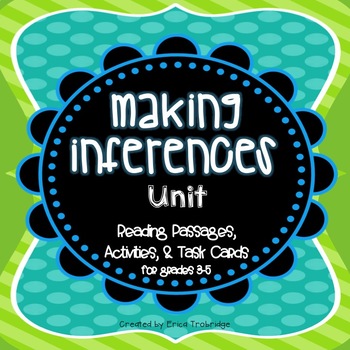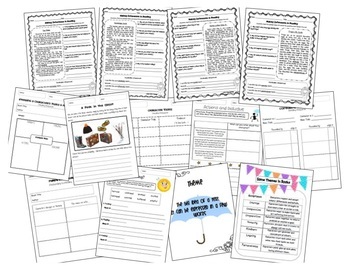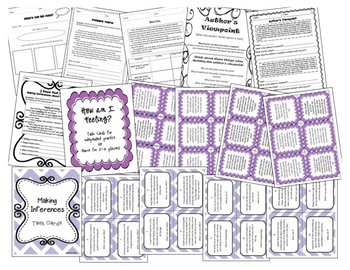Making Inferences Unit, Grades 3-5, Common Core Reading
- PDF
What educators are saying
Description
This 60+ page Making Inferences unit focuses on identifying learning goals with students, teaching them how to develop strategies for becoming more effective readers, and then providing activities for them to practice these strategies in various ways.
I've included fiction and nonfiction reading passages, anchor charts, graphic organizers, task cards, and other activities in this unit for inferring character traits, feelings, setting, author's viewpoint, and theme.
*** Be sure to download the 20-page product preview! :) ***
Be sure to "follow me" to receive freebies and to be notified of 50% off new products for the first 48 hours!
Visit my blog: One Lucky Teacher
Follow me on Facebook
Find me on Instagram
-Erica Trobridge
Common Core Reading Standards addressed in this unit:
Grade 3
RL.3.1. Ask and answer questions to demonstrate understanding of a text, referring explicitly to the text as a basis for the answers.
RL.3.2. Recount stories, including fables, folktales, and myths from diverse cultures; determine the central message, lesson, or moral and explain how it is conveyed through key details in the text.
RL.3.3. Describe characters in a story (e.g., their traits, motivations, or feelings) and explain how their actions contribute to the sequence of events.
RL.3.4. Determine the meaning of words and phrases as they are used in a text, distinguishing literal from nonliteral language.
RL.3.6. Distinguish their own point of view from that of the narrator or those of the characters.
RL.3.7. Explain how specific aspects of a text’s illustrations contribute to what is conveyed by the words in a story (e.g., create mood, emphasize aspects of a character or setting).
Grade 4
RL.4.1. Refer to details and examples in a text when explaining what the text says explicitly and when drawing inferences from the text.
RL.4.2. Determine the theme of a story, drama, or poem from details in the text; summarize the text.
RL.4.3. Describe in depth a character, setting, or event in a story or drama, drawing on specific details in the text (e.g., a character’s thoughts, words, or actions).
RL.4.4. Determine the meaning of words and phrases as they are used in a text, including those that allude to significant characters found in mythology.
Grade 5
RL.5.1. Quote accurately from a text when explaining what the text says explicitly and when drawing inferences from the text.
RL.5.2. Determine a theme of a story, drama, or poem from details in the text, including how characters in a story or drama respond to challenges or how the speaker in a poem reflects upon a topic; summarize the text.
RL.5.3. Compare and contrast two or more characters, settings, or events in a story or drama, drawing on specific details in the text (e.g., how characters interact).
RL.5.4. Determine the meaning of words and phrases as they are used in a text, including figurative language such as metaphors and similes.





